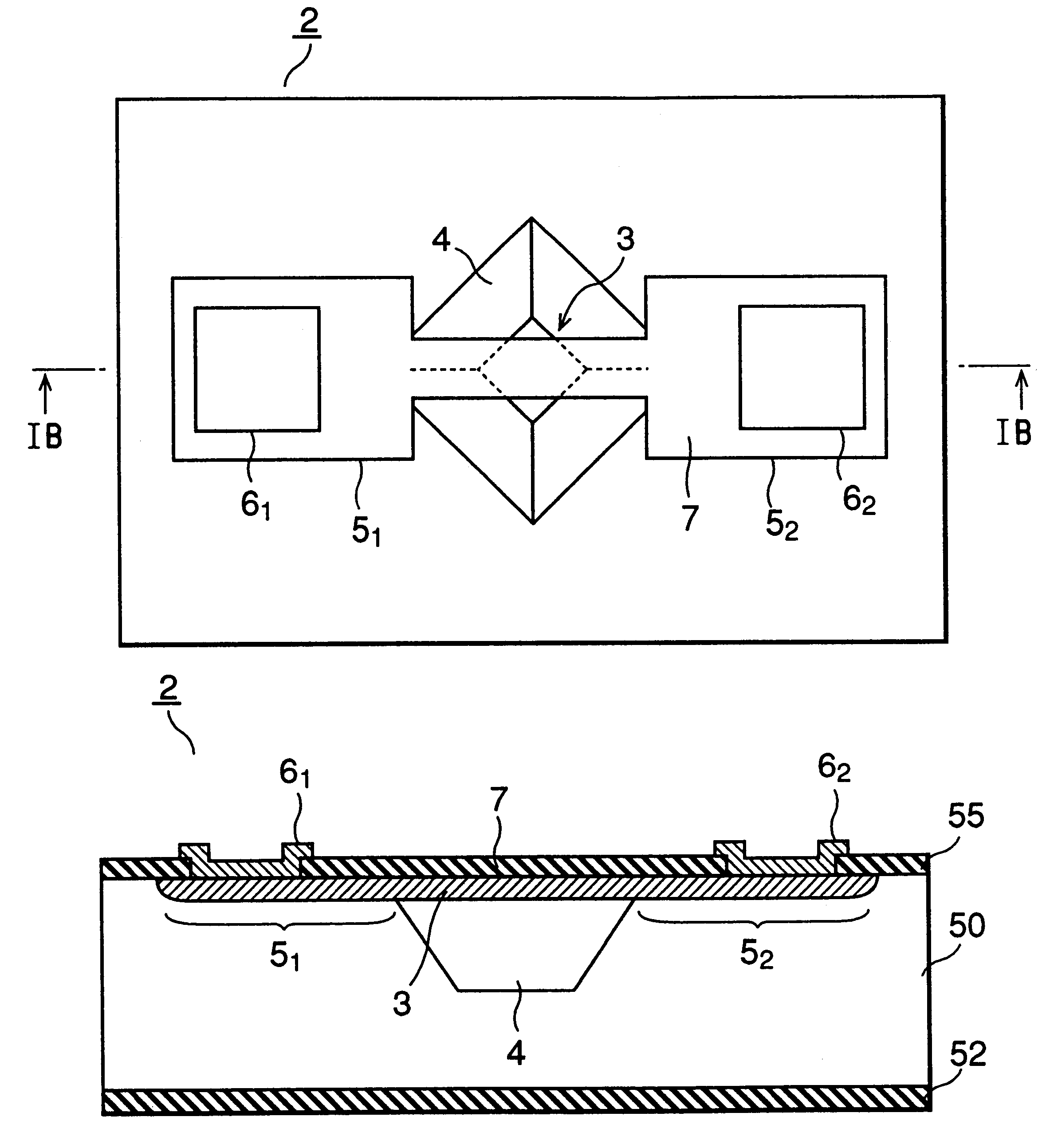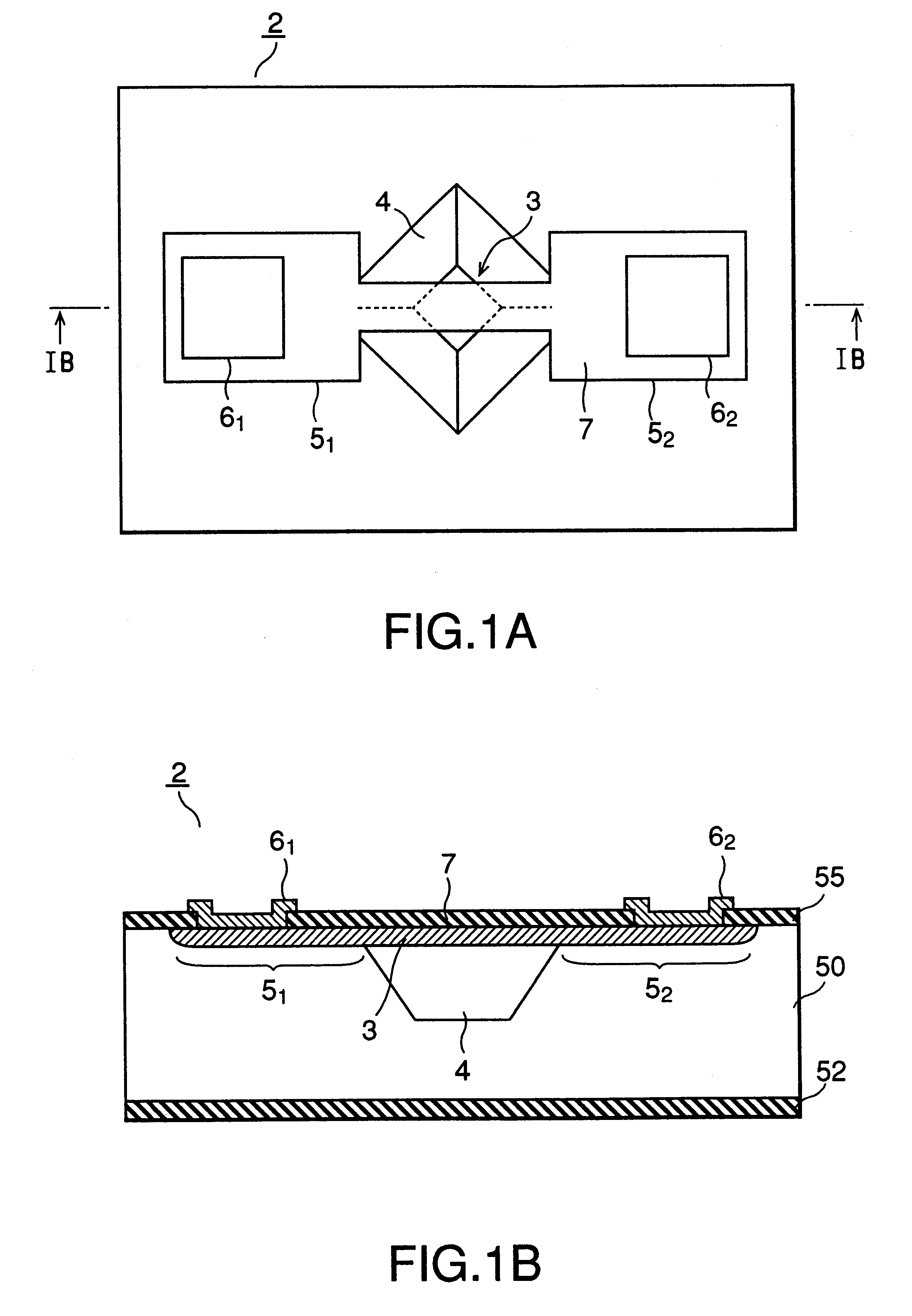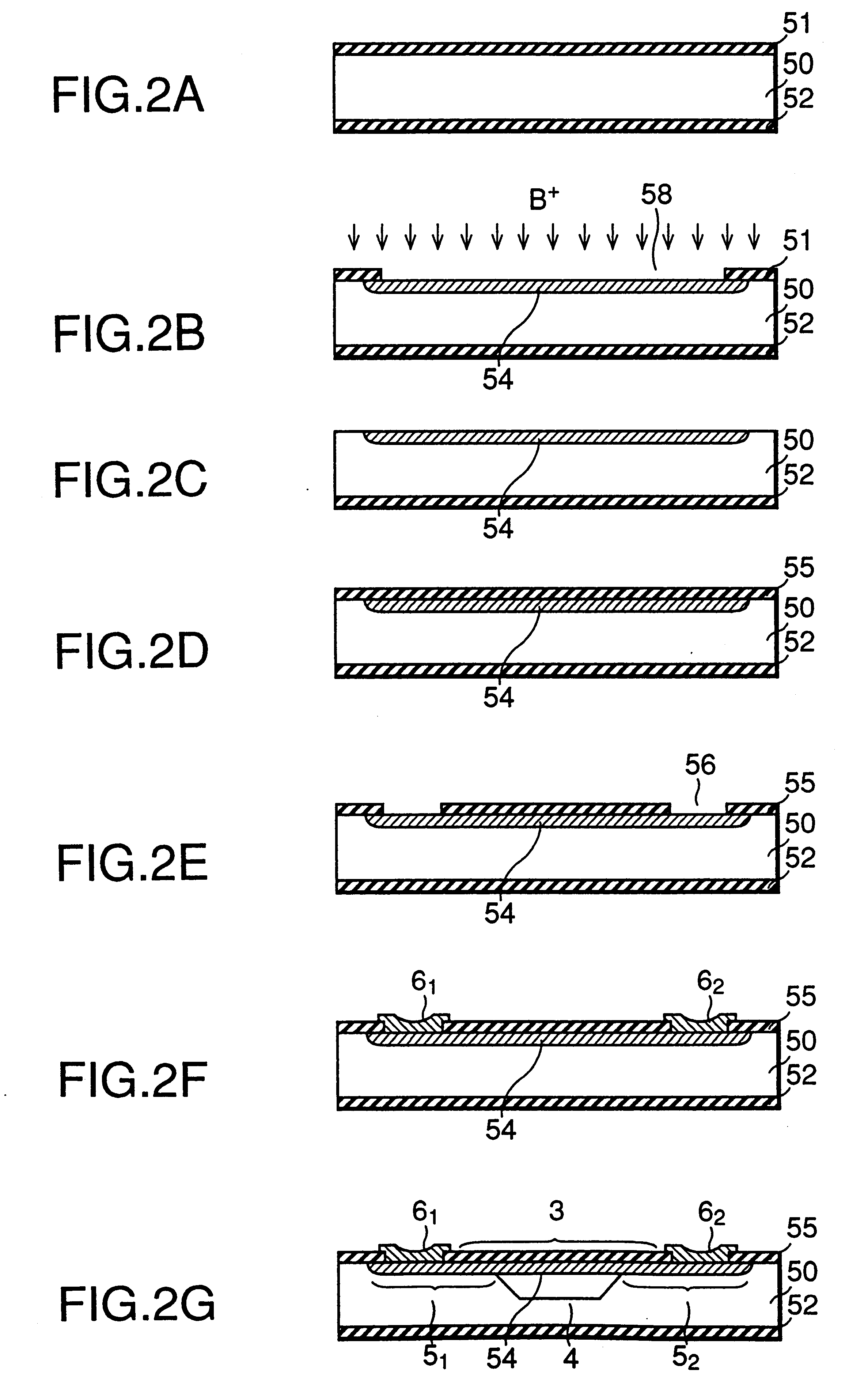Process for producing infrared emitting device and infrared emitting device produced by the process
- Summary
- Abstract
- Description
- Claims
- Application Information
AI Technical Summary
Benefits of technology
Problems solved by technology
Method used
Image
Examples
Embodiment Construction
The present invention will be generally described.
(1) To achieve the above object, the present invention is characterized by a method of manufacturing an infrared-emitting element which has an element substrate and a bridge (heat-generating) portion formed on the element substrate and shaped into a bridge-building structure by a separation space, and can emit infrared rays upon energization by a power supply, and an infrared-emitting element manufactured by the above method in which the bridge portion is formed to have a thickness of, e.g., 5 .mu.m or less, and which is manufactured as an infrared-emitting element having a heavily doped region prepared by doping an impurity by ion implantation and subsequent annealing at a dose of 3.0.times.10.sup.14 ions / cm.sup.2 or more.
(2) The present invention is characterized by a method of manufacturing an infrared-emitting element which has an element substrate and a bridge portion formed on the element substrate and shaped into a bridge-buil...
PUM
 Login to View More
Login to View More Abstract
Description
Claims
Application Information
 Login to View More
Login to View More - R&D
- Intellectual Property
- Life Sciences
- Materials
- Tech Scout
- Unparalleled Data Quality
- Higher Quality Content
- 60% Fewer Hallucinations
Browse by: Latest US Patents, China's latest patents, Technical Efficacy Thesaurus, Application Domain, Technology Topic, Popular Technical Reports.
© 2025 PatSnap. All rights reserved.Legal|Privacy policy|Modern Slavery Act Transparency Statement|Sitemap|About US| Contact US: help@patsnap.com



